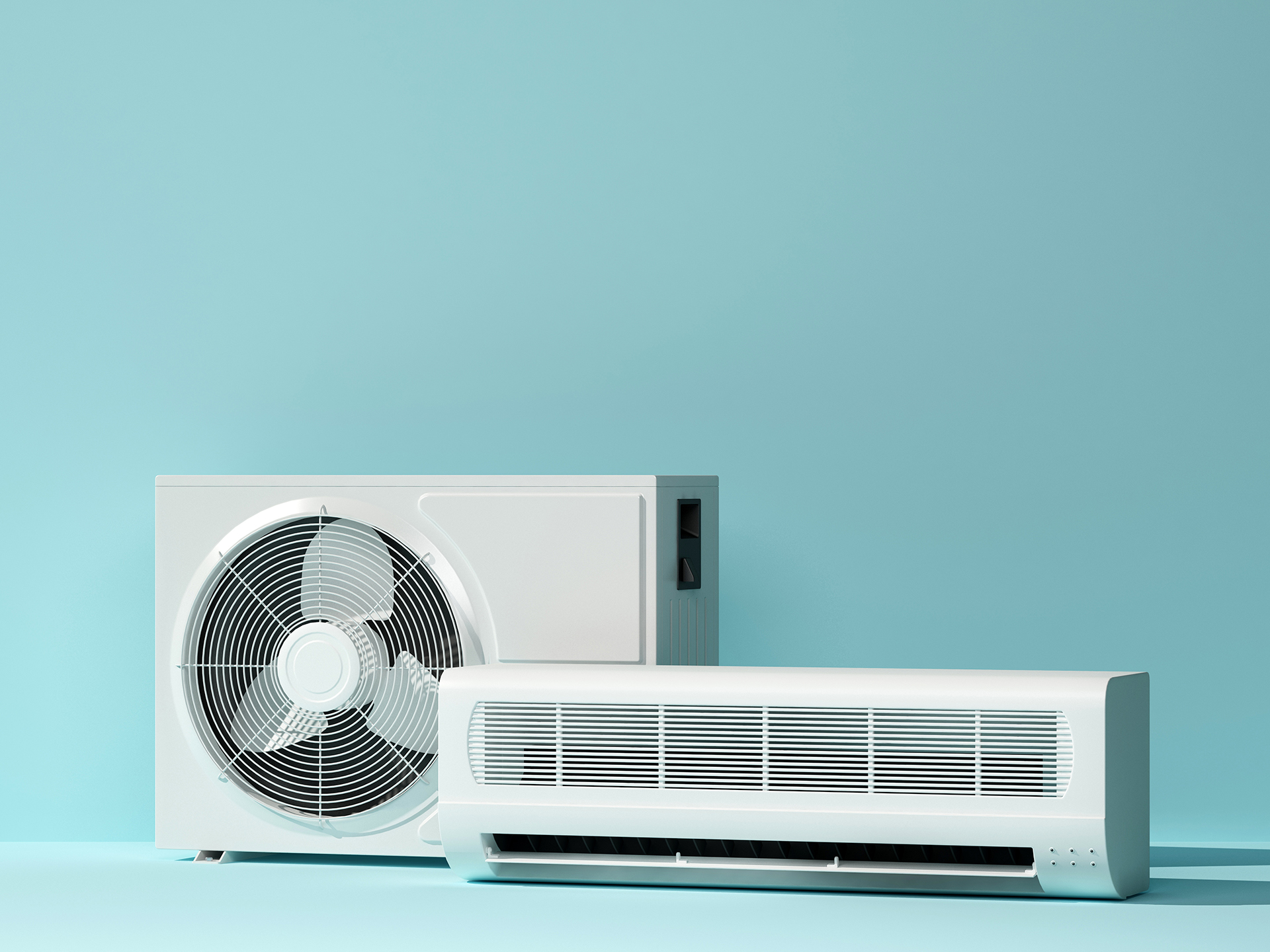
split system air conditioner units with copy space. 3d rendering
Don’t get air conned: everything you need to know before you buy AC
With climate change meaning we are likely facing more extreme high temperatures more often, many people are thinking of investing in air conditioning. If that’s you, here’s what you need to know before you buy…
Alternatives to air-con
Before we begin, it’s important to acknowledge that AC is power-hungry. If the cognitive dissonance involved in using heaps of energy to run air-con to counter the effects of climate change is just too much for you, let’s recall some of the other ways you can keep your cool when temperatures rise:
- Electric fans use a lot less power and can help. Remember though they work by moving air around not cooling it. You feel cooler because the breeze helps evaporate moisture off your skin.

- Taking cool – rather than cold – showers and letting yourself air dry will help too.
- Counterintuitively, keep windows shut in hot weather during the day too to keep warm air out. Close the curtains in rooms you’re not using to prevent the sun from warming the room through the window.
- Avoid using your oven, because that will warm the kitchen.
- Unplug any electrical appliances that are not being used.
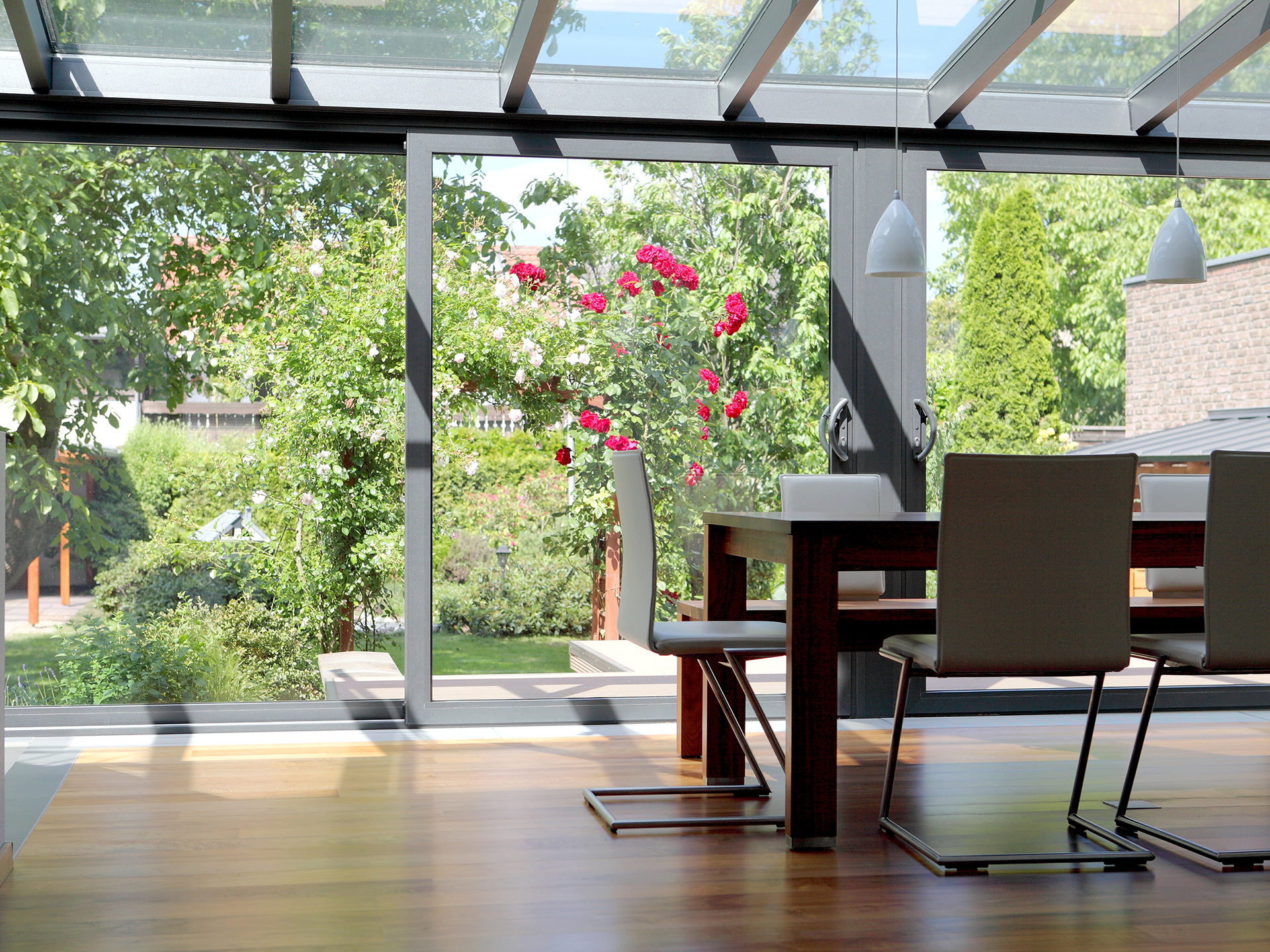
But if, despite taking steps like this, you have rooms that still become unbearable in extremely hot weather – perhaps a loft room or south-facing room – and decide that you want to invest in air con, what are the options?
Portable or fixed?
In a domestic setting, your main choice is between a portable and fixed unit. Portable – or monoblock – AC units are standalone machines with a big hose that needs to go out of a window. The unit extracts hot air from your room and pushes it out through the hose. The window needs to be sealed around the hose using a special window unit. Wheels on the bottom of the unit means it can be moved around the house relatively easily. Colin Swift from AEG, advises, “It’s crucial to avoid placing the unit near heat sources and direct sunlight to prevent overworking the thermostat.” If you don’t have much storage space, another option would be to hire a portable unit when you need it.

Fixed AC units are more expensive pieces of kit that are permanently installed, by a professional. They are known as split units because one part goes inside the house attached to an external wall or ceiling, and the other on the outside, with the two parts connected by pipes through holes in the wall. The outside compressor cools refrigerant, which is then pushed back into the internal evaporator unit to cool the air inside the room.
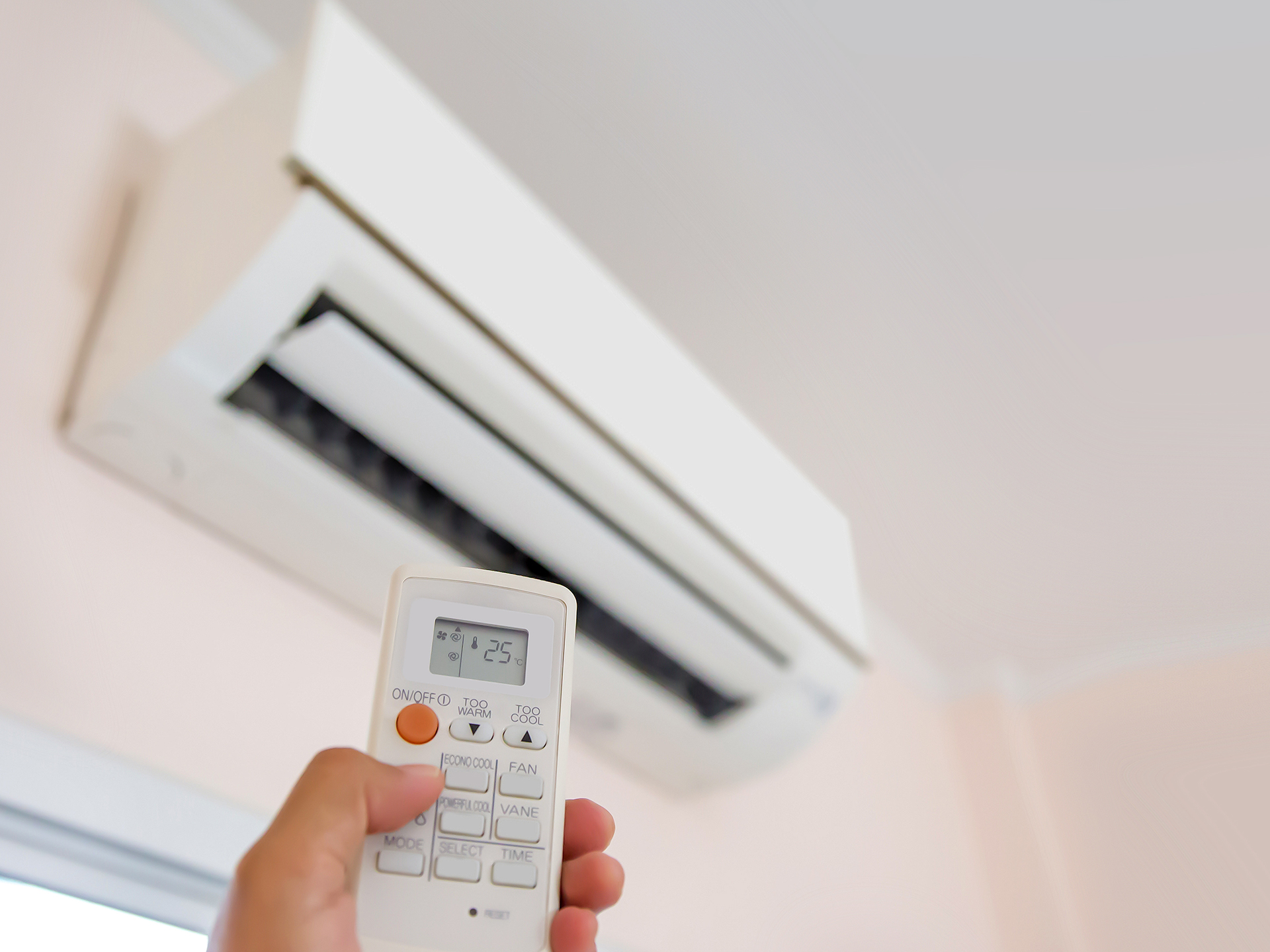
Stephen Day, from iHeat, says, “Whether you should opt for a portable or fixed air-conditioning unit depends on your needs, budget and the make-up of your home. Portable units are extremely versatile, perfect for those who want to cool specific rooms or for those who rent their home. They are especially good for anyone who works from home as they can be moved from room to room throughout the day, allowing you to stay cool no matter where you are. They are also cheaper than fixed AC, and great for those who only want the benefits of a cooling system during the hottest months. They are particularly good for people living in small flats or apartments – especially those that are open-plan – as you can get the cooling benefits without needing a powerful, permanent AC system. However, due to their size, they are often far less powerful than fixed AC systems and can be quite loud.
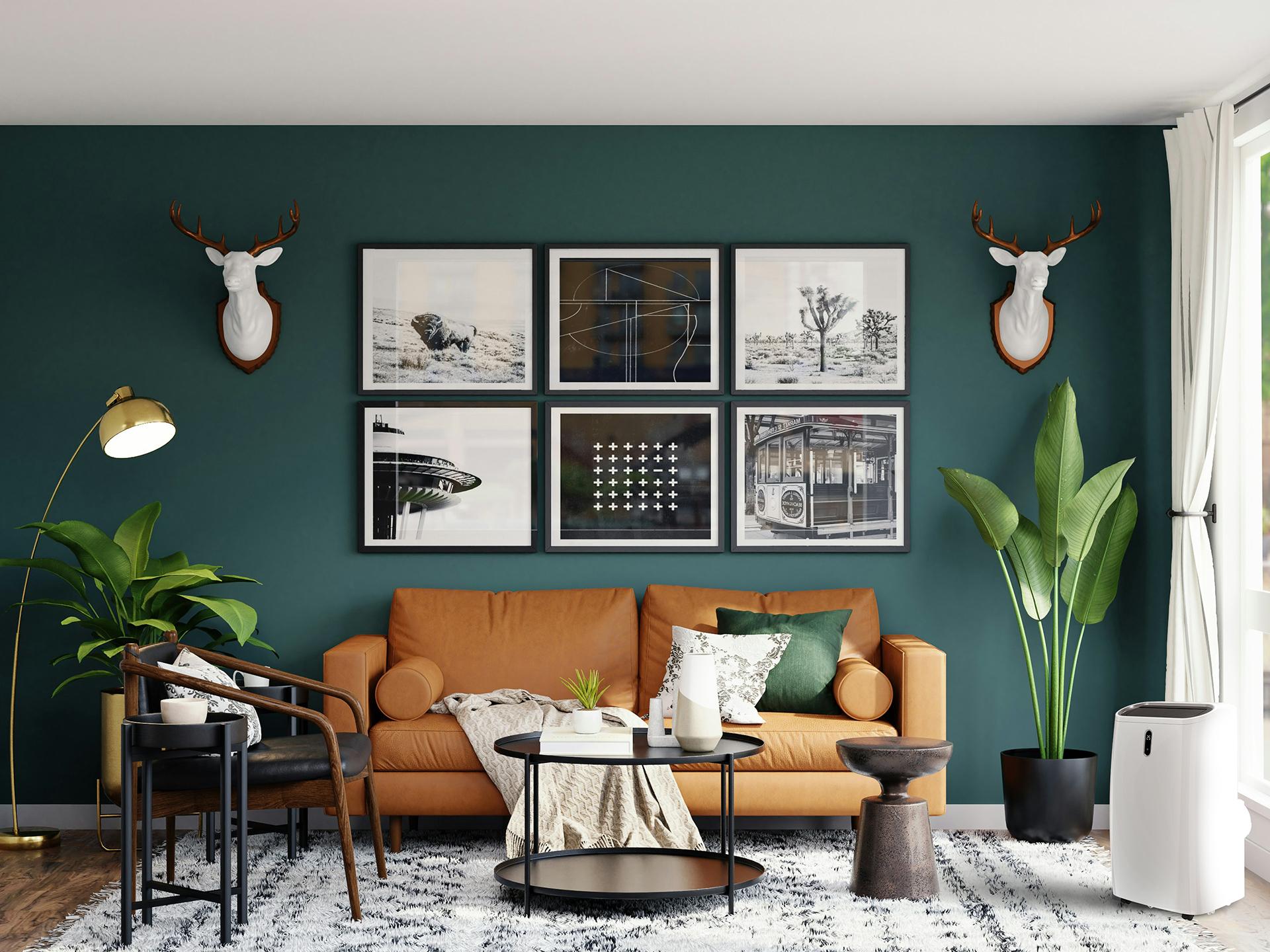
“Fixed AC units are a more permanent option and far more efficient than portable options, making them ideal for those who own their own home and want a cooling system they can ‘set and forget.’ Fixed AC units are also far more powerful than portable options, meaning they can cool larger spaces, or even multiple rooms without the need to move a bulky system around. The biggest drawback to fixed AC units is that they need to be professionally installed, meaning they require a larger upfront investment to cover any work that needs to be completed for the installation, including adding ducts, wall units or piping that can initially look unsightly.”
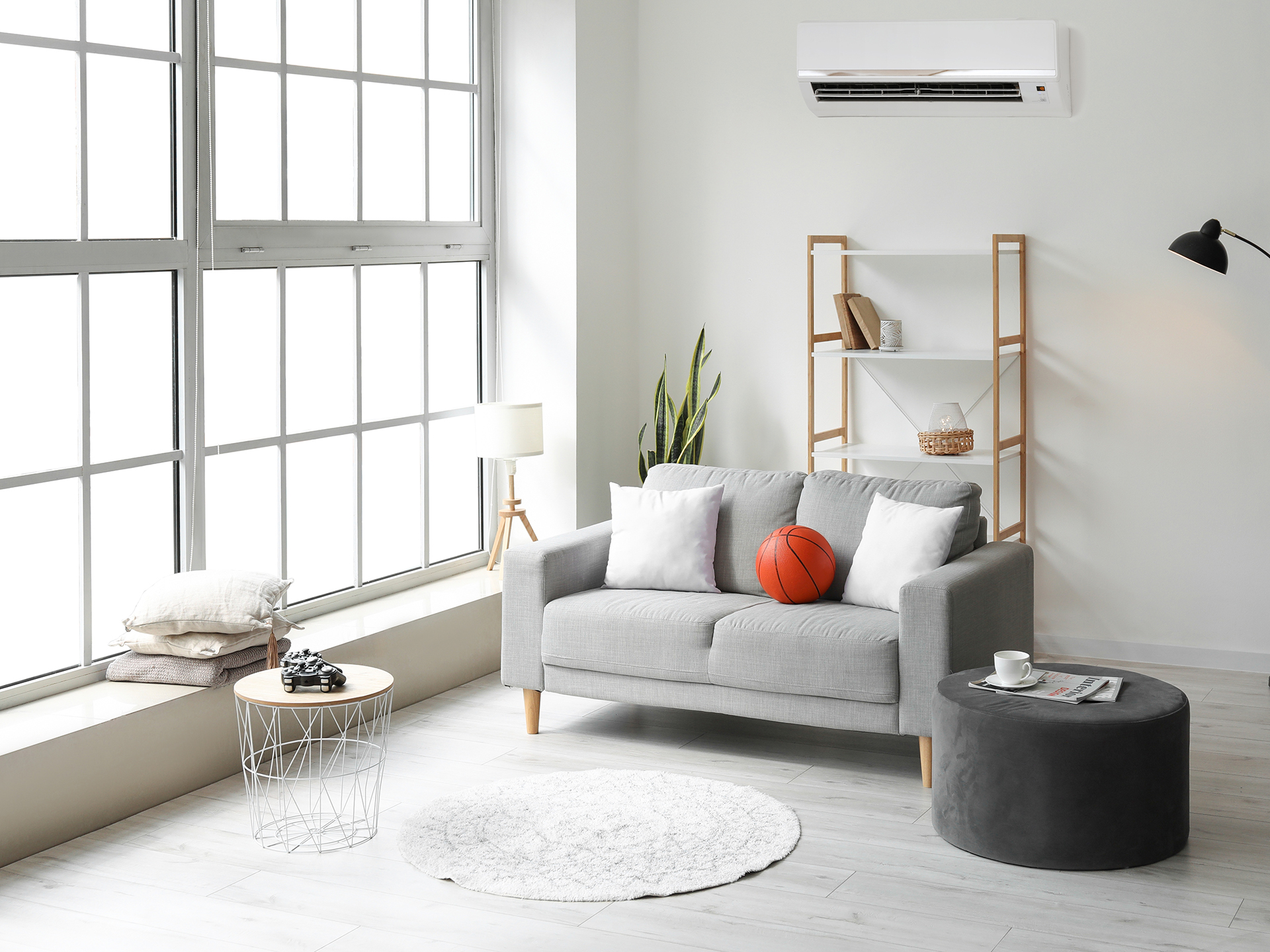
What size unit to choose?
Oliver O’Hare, from HiiLIFE, explains, “The size of AC systems is either rated in BTUs or kW. When picking your unit, a quick rule of thumb to consider is the length of the room (m) x width (m) x 150w (per m2). So, for example, a 15m2 room requires a 2.25kW AC unit. The calculation for this being: 5m x 3m = 15m2. 15m x 150 w = 2250 watts (ie 2.25kW).”
He continues, “It’s important to consider the size of the entire area that you want to benefit from AC. People often make the mistake of purchasing a system that is only sized for one space. Doing this and leaving doors open will not provide any value to nearby rooms.”
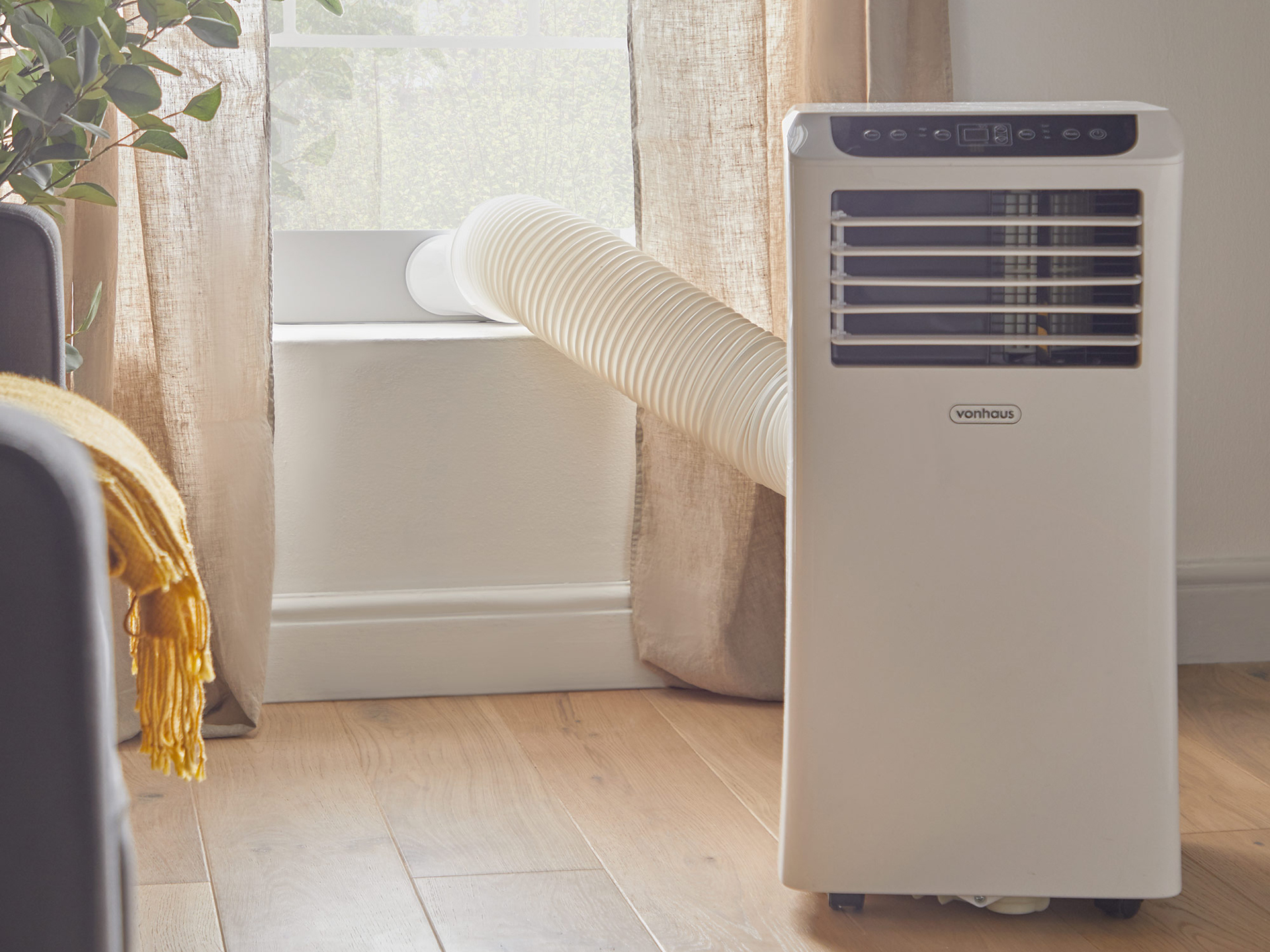
Any special features to look out for?
Chris Michael from Meaco suggests looking out for the following:
- dehumidify mode: removes excess moisture from the air,
- sleep mode: low-noise operation if the unit is to be used in the bedroom whilst sleeping,
- programmable timer: allows for setting specific times for the unit to turn on or off, providing convenience and energy savings,
- quiet operation: designed to operate with minimal noise, making it suitable for use in bedrooms and offices,
- app control: can be switched on remotely to cool a room down before you come home,
- window-kit compatibility: the window kit seals the hose into the open window ensuring proper venting. Different kits are compatible with different window types and sizes. Some brands only provide one type of window kit forcing you to buy an additional window kit. Check what comes with the unit before buying.
David Miloshev, from Fantastic Services, adds, “Some units offer reverse-cycle capabilities to provide both cooling and heating and also reduce humidity levels without necessarily cooling the air. Some circulate air without cooling or heating, useful for mild days.”
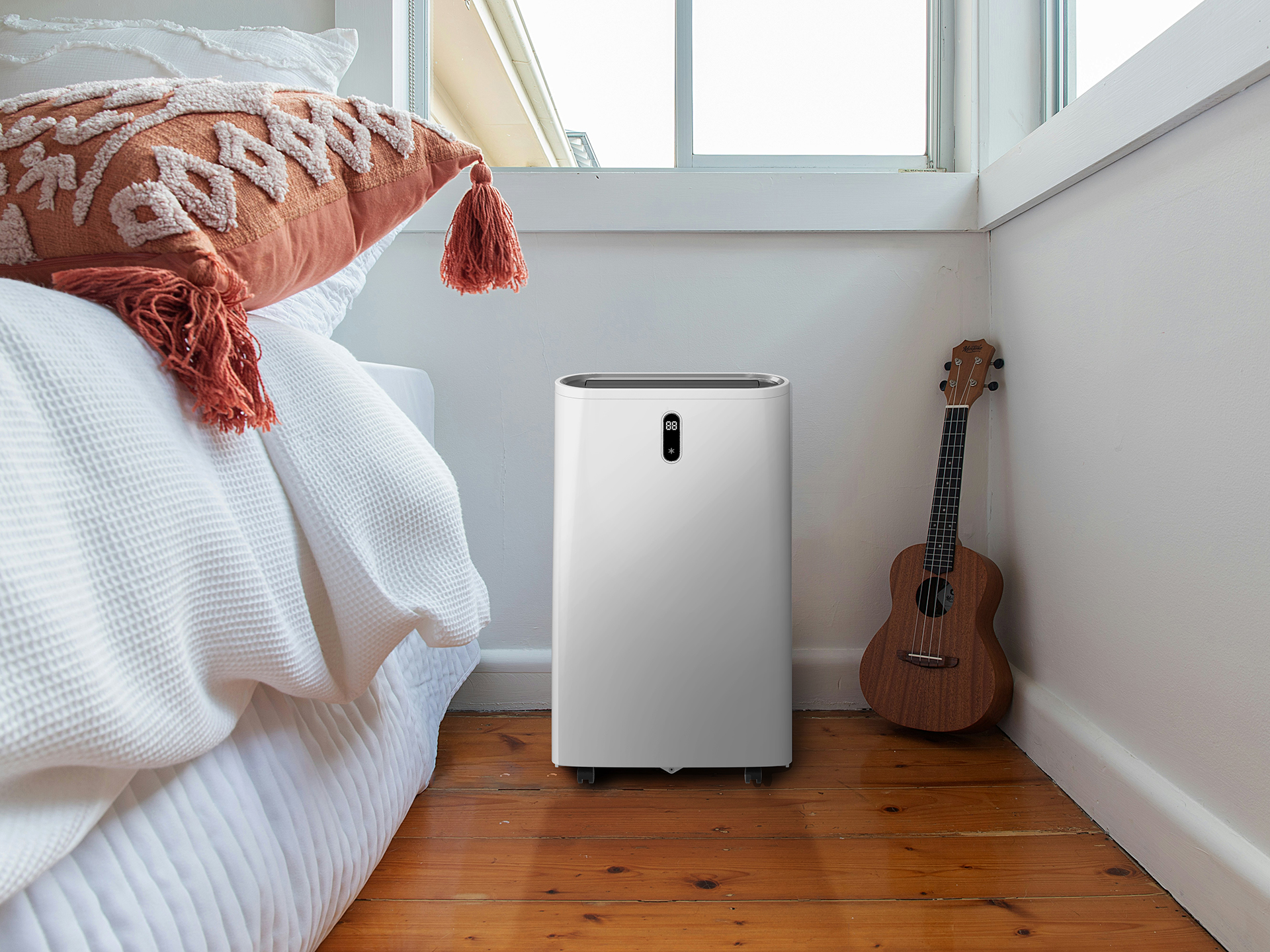
How much does it cost?
Portable units cost from about £300 upwards. As for permanent units, Andy Kerr, from BOXT, which installs air con for a fixed price, says, “A cheap air-conditioning unit can range from around £1,900 to £3,000, with more expensive models setting you back around £6,000 or more. The installation cost will depend on a few different factors:
- the size of room or space you want cooling,
- the number of rooms you want cooling,
- the size and type of property,
- the make and model you choose,
- your choice of extra features.”
How much does it cost to run?
Portable air-con units cost around 20-40p an hour to run depending on the model and the price of electricity. Fixed models between 50p and £2, depending on the model, cost of electricity etc.
Andy Kerr advises, “To help keep your air-conditioning bills down make sure to run your unit only when windows and doors are fully shut, never leave it running when you’re not home, and be sure to get your AC serviced regularly.”
What about sustainability?
There’s no getting away from the fact that AC uses a lot of electricity. Stephen Day recommends, “The most sustainable AC units are those with a high energy-efficiency rating, often indicated by an A+++ label. These units consume less power with minimal wasted energy, reducing the carbon footprint and keeping your energy bills down. However, even the highest-rated AC units need some TLC to continue working sustainably. It’s crucial the filters are kept clean and the system is maintained annually to ensure it keeps working efficiently.”

David Miloshev adds, “Choose units with high SEER (Seasonal Energy Efficiency Rating) that adjust their compressor speed to maintain the temperature, as this uses less energy. Look out too for units that use refrigerants with lower global warming potential (GWP), such as R-32. And consider systems that can be powered by solar panels to reduce reliance on grid electricity.”
Like all heating and cooling systems, AC works more efficiently in a well-insulated house.
New options
If you are building a new house or refurbishing one from scratch, there are new, more efficient cooling systems to consider. Air-to-air heat pumps, confusingly also called air-conditioners, haven’t been used much so far in the UK, but they can be used to cool as well as heat homes. New heat-pump-based cooling systems are being developed all the time. They are still expensive at the moment, but these are the products of the future. Daikin’s new Multi+ system, for example, uses a heat pump to heat or cool your house and provide hot water.




